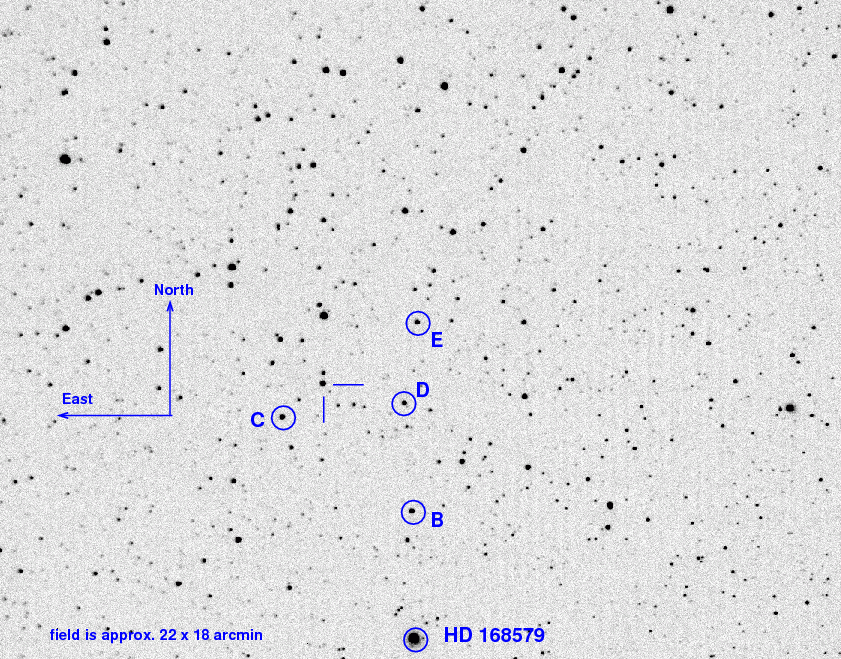
On the night of Apr 15/16, 2019, from about 2:40 AM until dawn, through mostly clear skies, I acquired a set of observations of the likely black-hole system MAXIJ1820+070, (also known as ASASSN-18ey ).
The system went into a second outburst around Mar 12, 2019; see Astronomer's Telegram 12567. This is my second night observing the target since that time, and it appears to be fading significantly. A good long-term record can be found at the AAVSO Light Curve Generator, which shows its peak during this outburst at V=14 around JD 2,458,563.
The main setup was:
Notes from the night:
This optical and X-ray and radio transient is likely a black hole accreting material at a higher-than-usual rate. It has been the subject of many observers over the past year -- see the trail of telegrams that include
and re-started with its rebrightening in March 2019 with
The object is located at
RA = 18:20:21.9 Dec = +07:11:07.3
A chart of the field is shown below. The size of the chart is about 22 by 18 arcminutes.
I've marked the location of several comparison stars, which also appear in light curves below. Stars C, D, and E are mentioned by the Tomoe Gozen team in ATel 11426, but all three are rather red, with (B-V) ranging from 1.14 to 1.37. Star B is one of the bluest nearby bright stars, with (B-V) = 0.52.
star UCAC4 B V ---------------------------------------------------- B 486-079513 12.975 12.454 C 486-079608 13.968 12.830 D 486-079523 14.637 13.272 E 487-077858 14.637 13.272 ----------------------------------------------------
The dark current was pretty ordinary.

Since the temperatures were low, I operated the camera at T = -30 C instead of the usual -20 C. Note how similar the dark current was to the value measured at T = -30 C a month ago, Mar 25, 2019. That's a good sign for the reproducibility of the camera.
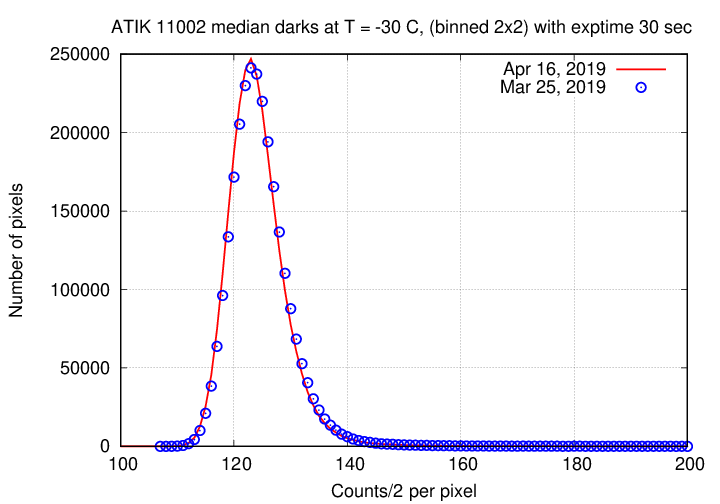
The sky value shows a brief period of clouds, but the sky cleared thereafter.

Here's a record of the telescope's drift. I made no adjustments to the mount during the night.
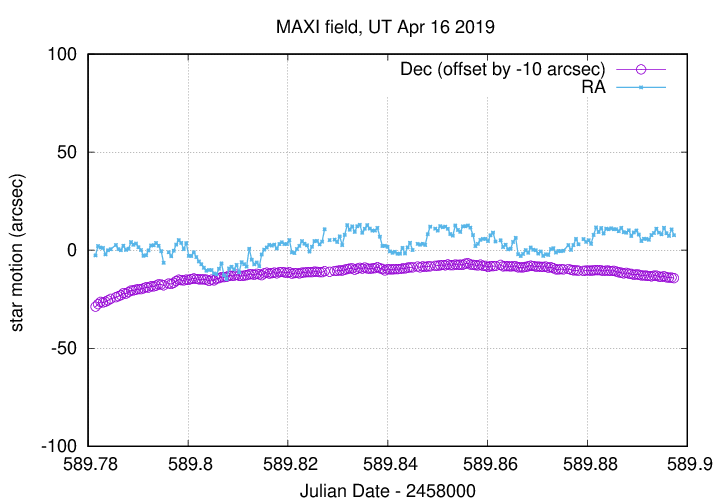
The number of objects detected -- I required 100 objects for an image to be included in the ensemble.
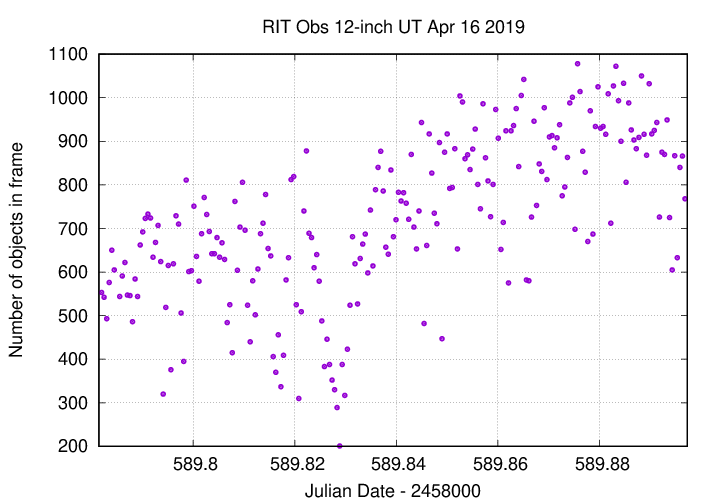
I used an aperture with radius 5.0 pixels. I made no changes to focus.

I discarded images which had obvious trailed stellar images, (5 of the 230 raw images), plus two images at the peak of the cloudy time.
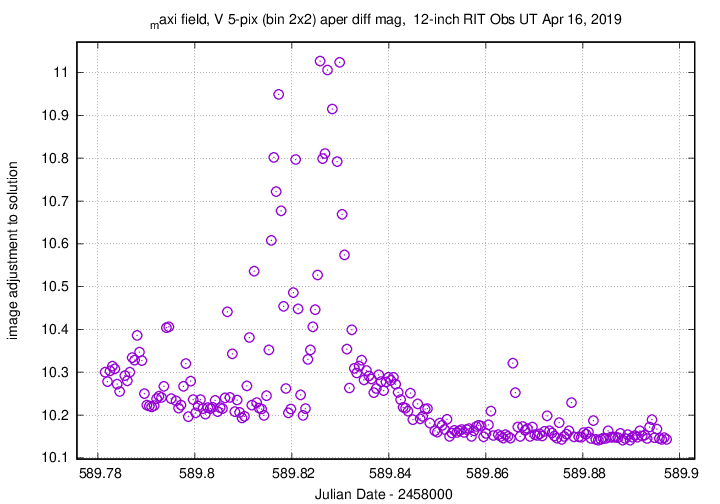
Using aperture photometry with a radius of 5 pixels (binned 2x2, each pixel is 1.34 arcsec, so a radius of 6.7 arcsec), I measured the instrumental magnitudes of a number of reference stars and the target. Following the procedures outlined by Kent Honeycutt's article on inhomogeneous ensemble photometry, I used all stars available in each image to define a reference frame, and measured each star against this frame.
Sigma-vs-mag plots show that the floor was about 0.007 mag overall; I marked the brightest star in the ensemble as "variable," due to saturation. The outlier around instrumental magnitude 6.5 and scatter = 0.15 is MAXI J1820+070; it has a scatter about 1.8 times larger than stars of similar brightness.
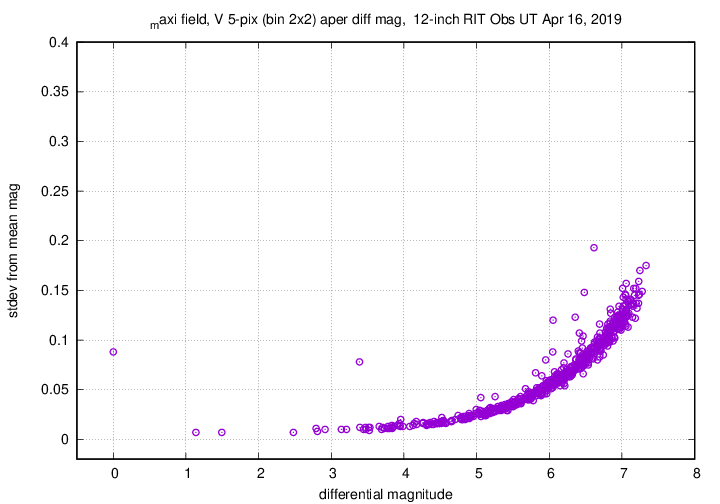
Here are light curves of the variable and the field stars.
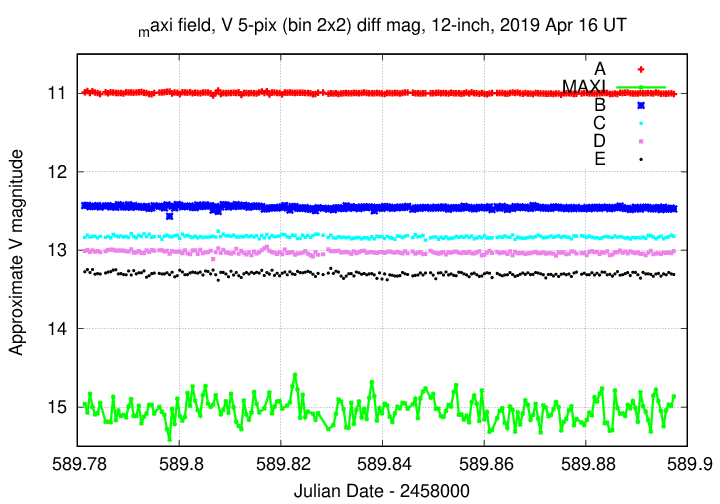
I used the UCAC value for the V-band magnitude of star "B" = UCAC4 486-079513 to shift the ensemble magnitudes to the standard V-band scale.
You can download my measurements below. A copy of the header of the file is shown to explain the format.
# Measurements of MAXIJ1820+070 made at RIT Obs, UT 2019 Apr 16, # in mediocre conditions, # by Michael Richmond, # using Meade 12-inch LX200 and ATIK 11000. # Exposures 30 seconds long, V filter. # Tabulated times are midexposure (FITS header time - half exposure length) # and accurate only to +/- 1 second (??). # 'mag' is a differential magnitude based on ensemble photometry # using a circular aperture of radius 5 pix = 6.6 arcseconds. # which has been shifted so UCAC4 486-079513 has mag=12.454 # which is its V-band magnitude according to UCAC4. # # UT_day JD HJD mag uncert Apr16.28146 2458589.78146 2458589.78316 14.959 0.082 Apr16.28197 2458589.78197 2458589.78367 15.068 0.086
Last modified 4/18/2019 by MWR.